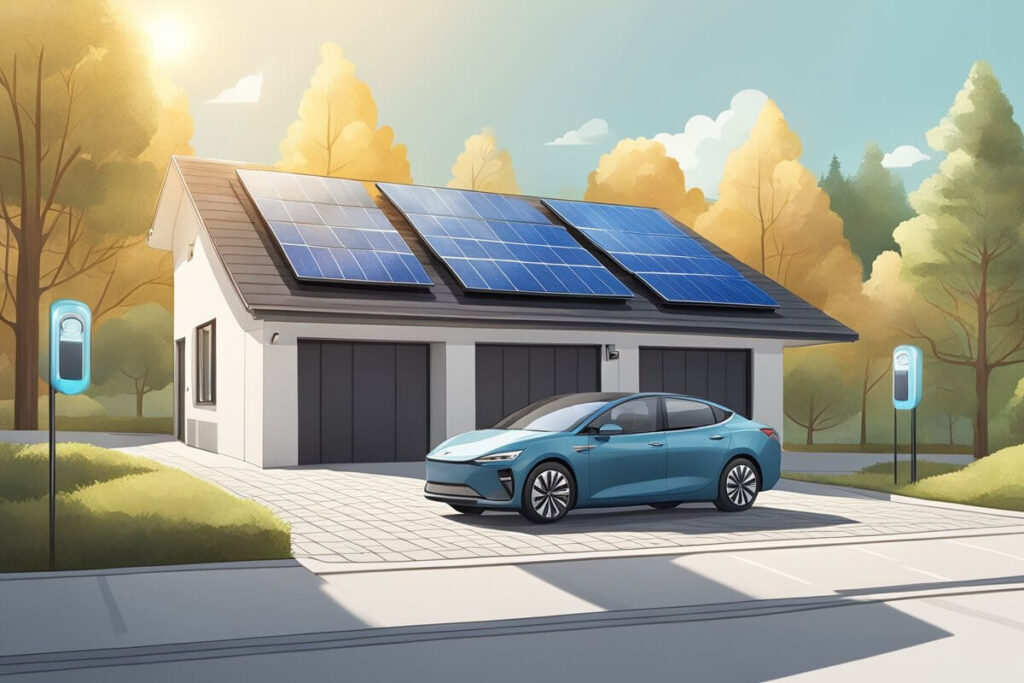How to Make Your Driving Habits More Eco-Friendly
Adopting eco-friendly driving habits not only contributes to a healthier environment but can also save you money and enhance your vehicle’s performance. With growing environmental concerns and the push towards sustainability, every individual action counts. By tweaking just a few of your driving practices, you can make a significant difference in reducing your carbon footprint. It’s not just about driving less, but driving smarter.
Understanding how your driving behavior affects fuel consumption and emissions is the first step towards greener driving. This involves strategies such as regular vehicle maintenance, adopting efficient driving techniques, and even exploring alternative modes of transportation when possible. Remember, making your driving habits more eco-friendly is an ongoing process, one that requires mindfulness about the choices you make every time you hit the road.

Key Takeaways
- Switching to eco-friendly driving habits benefits both the environment and your wallet.
- Regular vehicle maintenance and efficient driving techniques optimize your car’s performance.
- Incorporating alternative transportation methods can further reduce your driving footprint.
Understanding Eco-Friendly Driving
If you’re looking to reduce your environmental impact and embrace a more sustainable lifestyle, the way you drive can make a significant difference. This section is all about how your driving habits affect the environment and what eco-friendly driving really means.
Impact of Driving on Environment
Every time you take your car out for a spin, it releases greenhouse gas emissions into the air, contributing to air pollution and climate change. It’s not just about CO2; cars emit other harmful substances like nitrogen oxides and other particulates. Your carbon footprint increases with each mile you drive, especially if you’re hitting the gas hard or stuck in stop-and-go traffic.
What is Eco-Friendly Driving?
Sustainable driving habits involve driving in a way that minimizes your vehicle’s environmental impact. This means making use of techniques that conserve fuel and reduce emissions. For example, maintaining a steady speed, accelerating gently, and ensuring your car is well-maintained are all part of environmentally friendly driving practices. It’s about being conscious of your driving style and operating with intention.
Optimizing Your Vehicle for Efficiency
Maximizing the efficiency of your vehicle can save you money on fuel costs in addition to reducing your environmental impact. There are actionable steps you can take, from regular car maintenance to considering the leap to electric or hybrid vehicles.
Regular Vehicle Maintenance
Keeping your vehicle in top shape is crucial for fuel efficiency.
- Ensure your engine is properly tuned to improve fuel economy. This has been shown an average 4% improvement from neglected vehicles according to the the U.S. Department of Energy [1].
- Don’t skip on oil changes, as clean oil reduces wear caused by friction between moving parts which can help you burn less gas.
- Regularly checking your tire pressure is also a must—resulting in a fuel economy increase of 0.6% – 3% on average [1]. You want to hit that sweet spot recommended by your vehicle’s manufacturer for the best balance between traction and efficiency.
Choosing Fuel-Efficient Vehicles

If you’re car shopping, consider fuel efficiency as a prime factor. Look for cars with high miles per gallon (MPG) ratings or those that are labeled as a United States Environmental Protection Agency (EPA) SmartWay vehicle. Meanwhile, fuel-efficient models often incorporate advanced technologies like aerodynamic designs and lightweight materials. Picking one of these vehicles means your gas tank takes you further, reducing your carbon footprint and monthly fuel bills.
The Case for Electric and Hybrid Vehicles
Going electric is like hitting the fast-forward button toward eco-friendly driving. Electric vehicles (EVs) completely sidestep gas stations and their emissions are zero at the tailpipe level. If you’re not ready to go fully electric, hybrid vehicles are a solid middle ground. They combine a gas engine with an electric motor, significantly boosting MPG while reducing emissions. You get the best of both worlds – lower fuel costs and reduced environmental impact, while still having the reliability of gasoline for distance driving. Keep an eye out for tax incentives and rebates that can make switching to an electric or hybrid vehicle more affordable.
Smart Driving Behaviors
It’s about more than just the car you choose to drive to be an environmentally friendly driver – it’s about how you drive too.
Reducing Aggressive Driving
Aggressive driving is one of the quickest ways to burn through gas more quickly than necessary. Stomping on the gas pedal and braking hard can increase fuel consumption by up to 40% [2]. Try to maintain a steady pace and keep a buffer zone between you and the car ahead. This allows for coasting to a stop and avoiding pedal-to-the-metal starts.
Utilizing Cruise Control Correctly
Cruise control is like your car’s Zen mode for saving fuel on the highway. It’s perfect for keeping a consistent speed and is most effective at speeds between 50 to 70 mph. Just remember, cruise isn’t great for winding roads or heavy traffic – that’s your cue to take the reins.
- Do use cruise control when on open highways.
- Don’t rely on cruise in traffic – it can cause more braking and accelerating than needed.
Minimizing Idling
Letting your car run while it’s parked is a surefire way to burn through gas without going anywhere. Turn off the engine if you’re waiting more than a minute. Modern cars are designed for frequent starts and stops, so don’t stress about wear and tear. Plus, cutting out idling helps to keep the air cleaner around you.
Alternative Transportation Methods
Adopting eco-friendly transportation isn’t just about driving less—it’s about making smarter choices. Here are some methods that can reduce your carbon footprint significantly:

Carpooling and Ridesharing
Why drive alone when you can share the ride with others? Carpooling can cut down on your emissions and save you money on gas and parking. Apps and community boards make it easier than ever to link up with others going your way. During peak hours, you’ll also enjoy the perk of zipping by traffic in the carpool lane.
Biking and Walking
These are the ultimate zero-emission ways to get around. Swapping your car for a bike can help reduce air pollution and is great for your health. If your destination is close enough, why not enjoy a pleasant walk? You’ll burn calories, not fossil fuels.
Public Transit
Public transit systems are there for a reason: to move a lot of people efficiently. They’re less carbon-intensive per passenger than individual vehicles. The more people use them, the more effective they are!
Remote Work from Home
Driving to and from work is the majority of most people’s regular commute. By many companies embracing remote work, “telecommuting” has become a modern solution to cut down on travel altogether. By working from home, you’re not just avoiding traffic, you’re helping to reduce it.
Reducing Your Driving Footprint
Making a few strategic choices can have a big impact on reducing the carbon footprint from your daily drive. Let’s explore how you can cut down on fuel consumption, save on fuel costs, and ease traffic congestion, all by tweaking your driving habits.
Planning Efficient Routes
Before you even turn the key, take a moment to consider your route. Use apps to check for traffic and plan the most efficient route to avoid congestion, which saves time and reduces idling. When possible, combine errands into one trip to cut down on unnecessary travel.
Limiting Unnecessary Trips
Think about whether each trip in your car is really necessary. Could a virtual meeting replace your in-person one? Maybe group your shopping tasks to hit the grocery store, post office, and pharmacy in one go. By limiting unnecessary trips, you’re saving yourself time, money, and unneeded climate impact.
Lightening Your Load
Every extra pound requires more fuel to move. Take a look in your trunk and remove any extra weight you don’t need for the day’s journey. Keeping your vehicle light means better fuel efficiency.
Frequently Asked Questions
Transitioning to eco-friendly driving isn’t just about the car you drive; it’s also about how you drive and maintain your vehicle. These FAQs aim to guide you in reducing your environmental impact on the road.
What are top methods to reduce my car’s environmental footprint?
To minimize the environmental impact of your car, consider carpooling with others or using public transportation when possible. Keeping your car well-maintained and ensuring your tires are properly inflated can also lead to a lower carbon footprint.
In what ways can I adjust my driving habits for better fuel efficiency?
Improving fuel efficiency can be as simple as eliminating aggressive driving behaviors like speeding, rapid acceleration, and hard braking. Instead, aim for smooth, steady acceleration and deceleration whenever you’re behind the wheel.
Can you recommend some eco-friendly vehicle maintenance tips?
Regular maintenance, such as changing your oil on schedule, using the recommended grade of engine oil, and replacing air filters, contributes to better fuel economy. Additionally, recycling motor oil and properly disposing of old batteries are eco-conscious practices.
What driving strategies contribute to a greener environment?
Adopt strategies such as planning your route effectively to avoid congested areas, using cruise control on highways, and turning off your engine during prolonged stops to limit unnecessary fuel consumption and reduce emissions.
Are there specific features that help a car be labeled as ‘eco-friendly’?
Vehicles boasting features like start-stop technology, energy recuperation systems, and those that meet higher emission standards are often considered eco-friendly. Hybrids, electric vehicles, and cars with high fuel efficiency also fall under this category.
Natural Replacements references research from industry experts and reputable industry publishers to support claims or data in our content when applicable. Learn more about our publishing standards and practices in our editorial guidelines.
- U.S. Department of Energy: Alternative Fuels Data Center - Vehicle Maintenance to Conserve Fuel
Accessed: February 19, 2024 - FuelEconomy.gov - Driving More Efficiently
Accessed: February 19, 2024
X
Citations for This Article
APA
Replacements, Natural Replacements Staff. (February 19, 2024). How to Make Your Driving Habits More Eco-Friendly. Natural Replacements. Retrieved December 14, 2025, from https://naturalreplacements.com/learn/travel/eco-friendly-driving-habits/
MLA
Replacements, Natural Replacements Staff. "How to Make Your Driving Habits More Eco-Friendly." Natural Replacements, https://naturalreplacements.com/learn/travel/eco-friendly-driving-habits/
Chicago
Replacements, Natural Replacements Staff. "How to Make Your Driving Habits More Eco-Friendly." Natural Replacements, Last modified February 19, 2024. https://naturalreplacements.com/learn/travel/eco-friendly-driving-habits/
